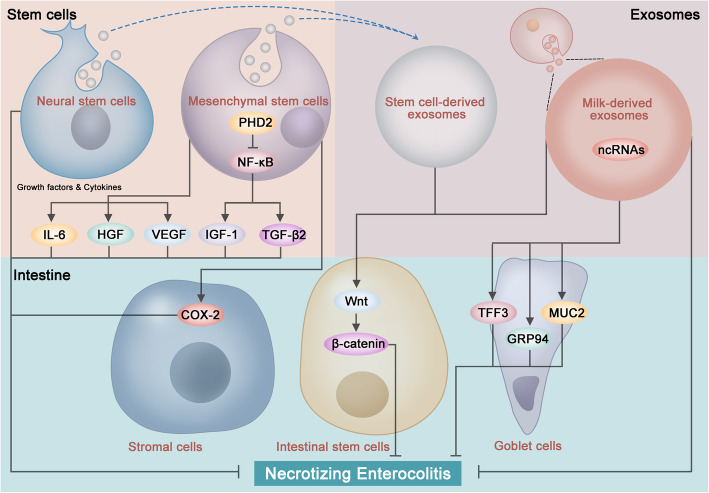Fig. 1.
Functions and mechanisms of stem cells and exosomes in necrotizing enterocolitis (NEC). Stem cells and exosomes exert beneficial effects to NEC via various signaling pathways. Mesenchymal stem cells (MSCs) secrete cytokines and growth factors including interleukin (IL)-6, vascular endothelial growth factor (VEGF), and hepatocyte growth factor (HGF). Downregulation of prolyl hydroxylase 2 (PHD2) activates the nuclear factor-κB (NF-κB) signaling in MSCs, which increases the paracrine release of insulin-like growth factor (IGF)-1 and transforming growth factor-beta 2 (TGF-β2). MSCs increase the expression of cyclooxygenase 2 (COX-2) in stromal cells by the paracrine manner. Exosome (Exs) contains non-coding RNAs (ncRNAs) beneficial to NEC injury. Milk-derived Exs increase goblet cell expression markers trefoil factor 3 (TFF3) and mucin 2 (MUC2), as well as the expression of endoplasmic reticulum chaperone protein glucose-regulated protein 94 (GRP94). Both MSCs and MSC-derived Exs can activate the Wnt/β-catenin signaling pathway, which increases ISC viability and intestinal regeneration

